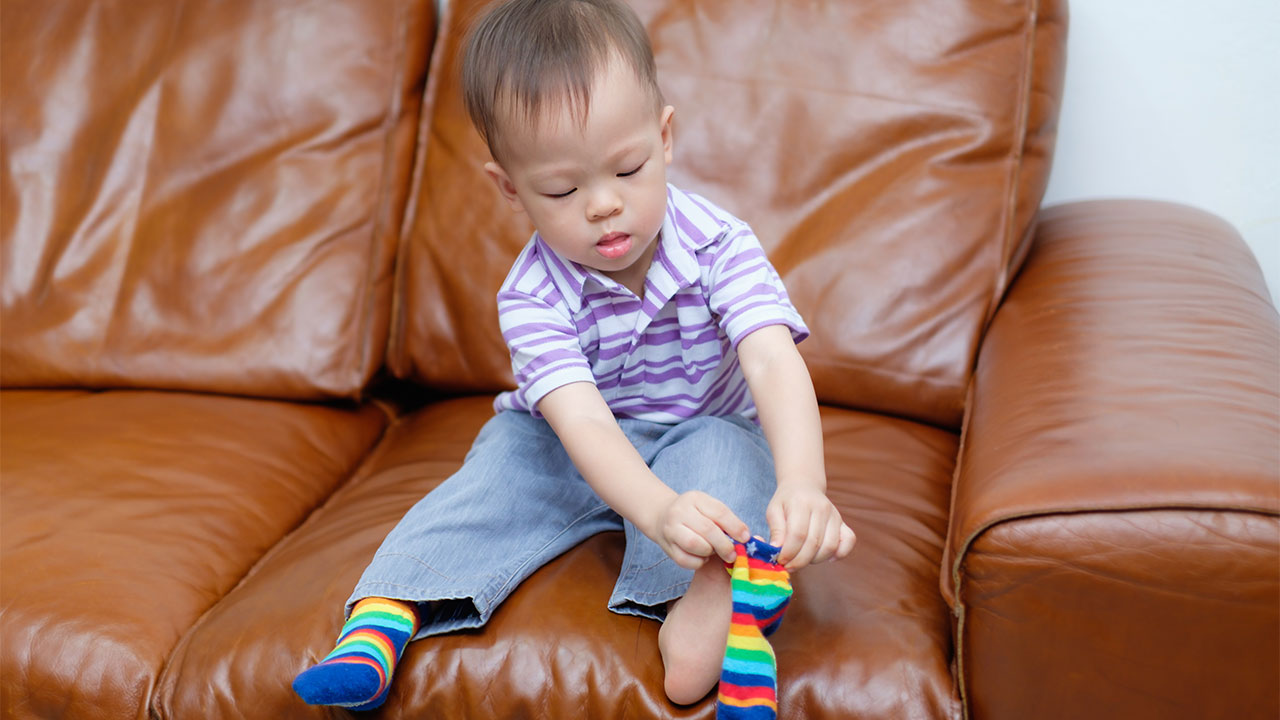As children grow and develop, they generally progress through learning a variety of self-help skills, such as dressing and undressing and taking a bath or shower unassisted. For your child who has a visual impairment and multiple disabilities, learning these skills may take longer than her typically developing siblings or age mates. In fact, she may always need support from you or someone else to complete these tasks. However, it is important that she learn to do as much for herself as possible.
If your child has physical limitations, consultation with an occupational therapist is important. This professional has training in how to help children with limited motor function learn dressing and bathing skills. The occupational therapist may also be able to recommend equipment that can help your child gain maximum independence, such as a chair she can sit on in the shower or a tool she can use to pull up her socks if she can’t reach her feet.
For most children, learning to undress is easier than learning to dress, so consider beginning with undressing skills. Teach your child where to put her clothes once she takes them off. A basket or hamper located in the place where she undresses will make it easier for her to learn this concept. Also, involve her in getting out her clothes to get dressed. You can encourage her to select the clothes she wants to wear. Opportunities to make choices help her develop her communication skills and self-advocacy skills. Here are some additional ideas:
- Using routines for dressing and undressing will give your child a framework for understanding what is going to happen and what is expected of her. You might begin the dressing routine by giving her a symbol that can become associated with the routine. The symbol for dressing might be a card with a small sock on it that looks and feels similar to one of her socks.
- Use hand-under-hand or hand-over-hand techniques when guiding your child to take clothes out of drawers or closets, undress, dress, or put clothes in the hamper.
- Name the parts of her body that are involved when assisting your child with undressing, dressing, or bathing. For example, you might say, “Let’s take your sock off your right foot.” This will help her learn more about her body and the terms used to name body parts.
- Organization is important for dressing and bathing. Think about how you can set up the environment for your child so that things are in predictable places. For example, in her dresser drawers, you can use dividers to separate her underpants from her socks. Placing all of the products she might need for bathing in one basket will make it easier for her to locate what she wants. You might keep the basket in the bathroom on a shelf that she can reach.
- If your child has trouble figuring out sequences, pile her clothes in the order that they should be put on, from top down. For example, underpants, socks, pants, then shirt. This will help your child get the socks under the pants leg not over, the underpants under the trousers and not over, and the shirt out of pants and not half tucked in. For bathing, you can organize the shampoo, conditioner, and soap in order of the sequence of use, from head to toe.
- Clothing items that are loose fitting, have elastic waists, and use Velcro for fasteners, are easier for children to take off and put on than items that have zippers, snaps, buttons, and laces. If you begin with clothing that is easier for your child to remove and put on, over time you can gradually move to clothing that is more challenging for her.
- Learning to tie shoes is a challenge many children work hard to master. Some children find it easier to learn to tie shoes by making two loops and crossing them over. Your child’s occupational therapist may be able to show you this method and other “tricks” for dressing, such as easier ways to put on a jacket or pants.


